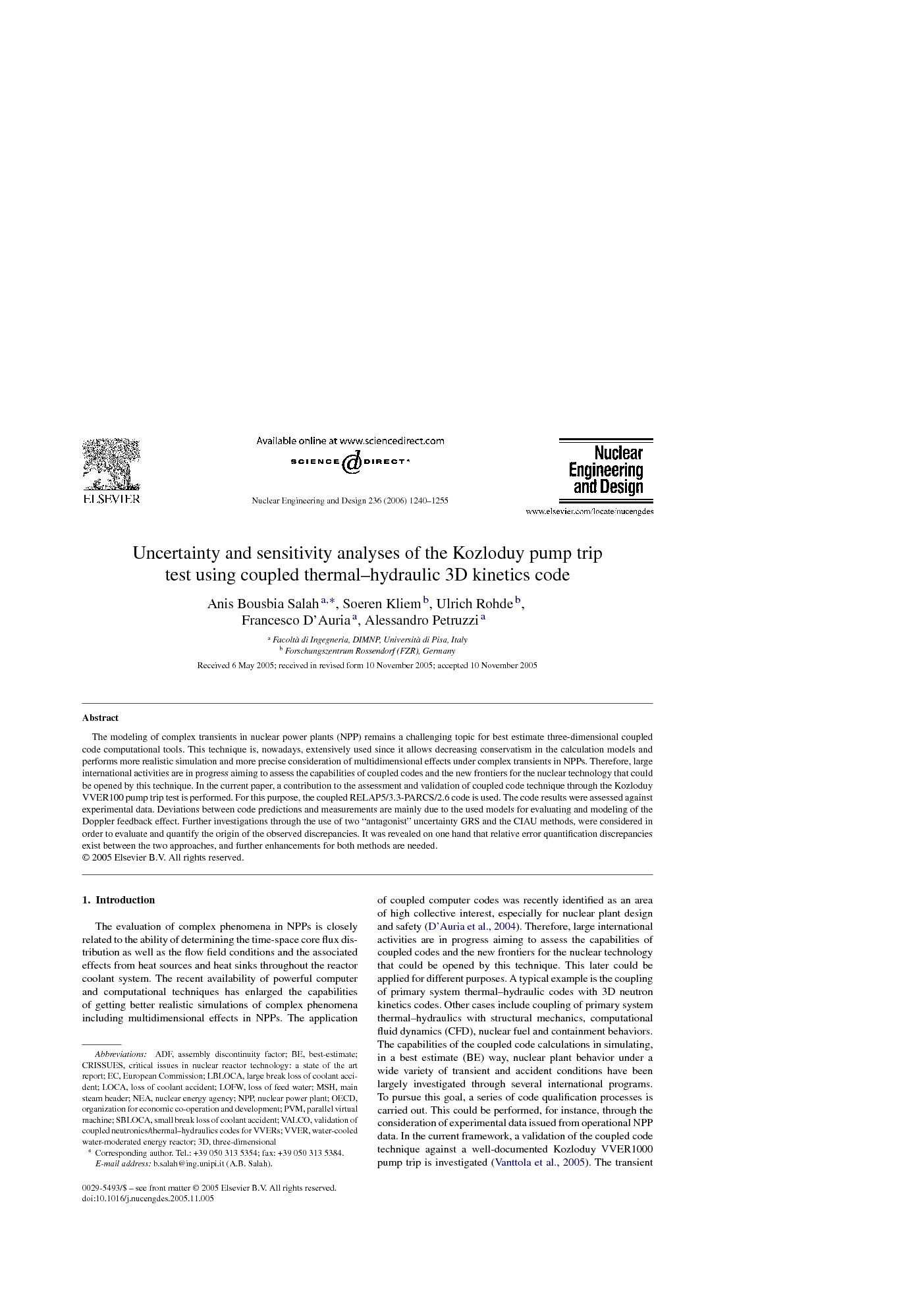ترجمه فارسی عنوان مقاله
عدم قطعیت و تجزیه و تحلیل حساسیت از آزمون سفر پمپ Kozloduy با استفاده از سینتیک کد 3D هیدروترمال توأم
عنوان انگلیسی
Uncertainty and sensitivity analyses of the Kozloduy pump trip test using coupled thermal–hydraulic 3D kinetics code
| کد مقاله | سال انتشار | تعداد صفحات مقاله انگلیسی |
|---|---|---|
| 25844 | 2006 | 16 صفحه PDF |
منبع

Publisher : Elsevier - Science Direct (الزویر - ساینس دایرکت)
Journal : Nuclear Engineering and Design, Volume 236, Issue 12, June 2006, Pages 1240–1255
ترجمه کلمات کلیدی
عدم قطعیت - تجزیه و تحلیل حساسیت -
کلمات کلیدی انگلیسی
Uncertainty ,sensitivity analyses ,

